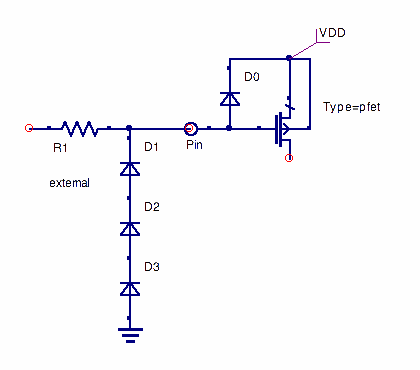samabraham
Newbie level 6
Hi All,
Please suggest me how to connect diodes to avoid Antenna Violation. I referred some books all are explaining it differently, some books suggesting to connect the N(cathode -ntype diffusion) of the diode to metal causing violation and P(anode- p substrate) to GND while some other book suggest to connect P(anode-ptype diffusion) of the diode to the metal causing violation and N(cathode-Nwell) to VDD
Please suggest me how to connect diodes to avoid Antenna Violation. I referred some books all are explaining it differently, some books suggesting to connect the N(cathode -ntype diffusion) of the diode to metal causing violation and P(anode- p substrate) to GND while some other book suggest to connect P(anode-ptype diffusion) of the diode to the metal causing violation and N(cathode-Nwell) to VDD

